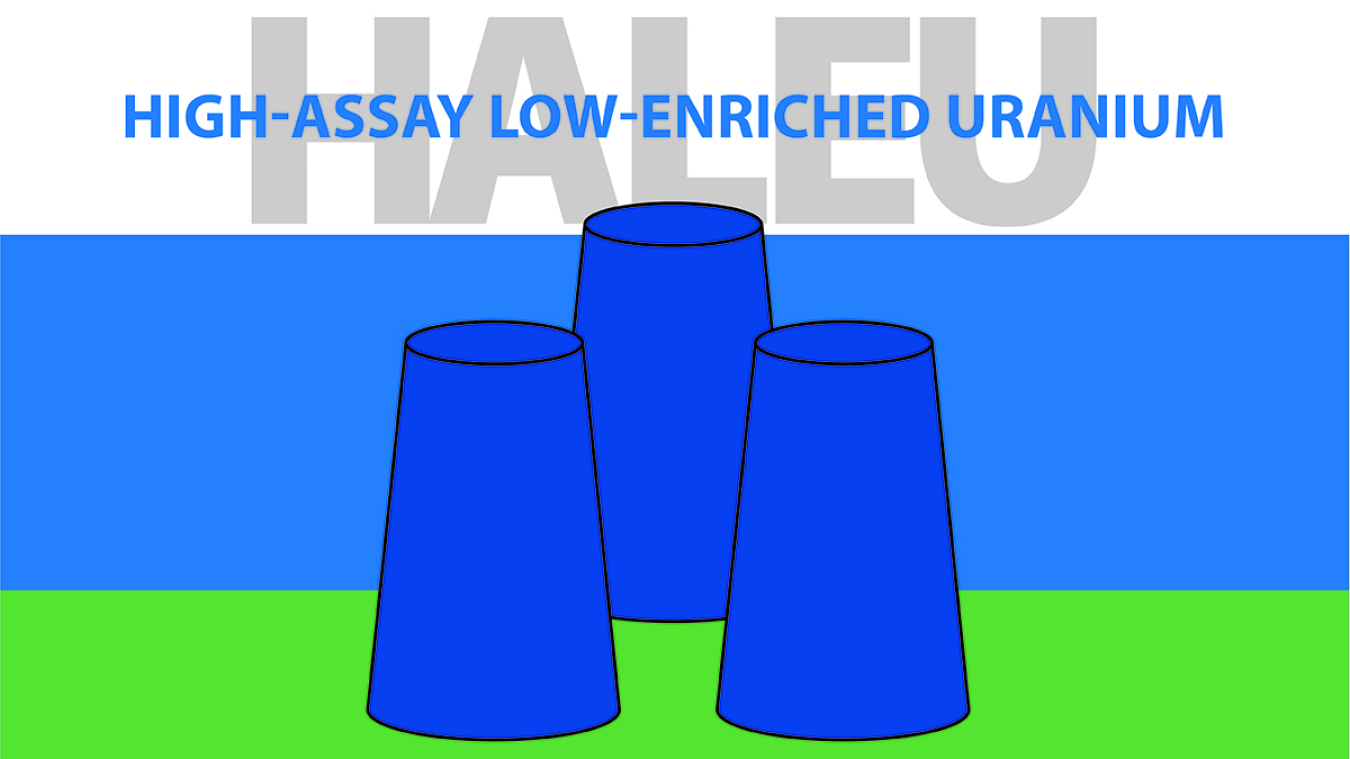More than 20 U.S. companies are developing advanced reactors that will completely change the way we think about the nuclear industry.
Most of these new reactor designs will be smaller, more flexible and less expensive to build and operate. Some of them may consume used nuclear fuel or help bring clean water and reliable power to communities never thought possible.
The majority of these designs will require a fuel that isn’t yet available at a commercial scale.
It’s what the industry calls high-assay low-enriched uranium, or HALEU for short, and these companies can’t bring their reactors to life without it.
What is High-Assay Low-Enriched Uranium?
Our existing fleet of reactors runs on uranium fuel that is enriched up to 5% with uranium-235—the main fissile isotope that produces energy during a chain reaction.
By definition, HALEU is enriched between 5% and 20% and is required for most U.S. advanced reactors to achieve smaller designs that get more power per unit of volume. HALEU will also allow developers to optimize their systems for longer life cores, increased efficiencies and better fuel utilization.
Click to view or download our HALEU infographic.
The Growing Need for HALEU
There’s a pressing need for HALEU now that could force some companies to reevaluate their plans if they can’t access this fuel.
The U.S. Department of Energy (DOE) projects that more than 40 metric tons of HALEU will be needed before the end of the decade, with additional amounts required each year, to deploy a new fleet of advanced reactors.
To help mitigate that risk, DOE is exploring three options to support the testing and demonstration of these advanced reactors with HALEU fuel.
Near-Term Solutions
DOE and its national labs are working on two chemical processes to provide small amounts of HALEU to vendors in the near-future. Both methods involve the recycling of used nuclear fuel from government-owned research reactors to recover highly enriched uranium (greater than 20%) that can then be downblended to make HALEU fuel.
Electrochemical Processing
Irradiated fuel from DOE-research reactors is prepared and placed into a high-temperature molten salt chemical bath. An electric current is then used to separate the highly enriched uranium metal from the fission products. The recovered uranium is cleaned and mixed with lower enriched uranium to create HALEU. The uranium is then fabricated into new fuel in a high-temperature furnace.
Idaho National Laboratory is working to make up to 10 metric tons of HALEU using this process in the near-term to support current testing and demonstration projects.
Hybrid Zirconium Extraction Process (ZIRCEX)
Irradiated fuels are dissolved in hydrochloric acid gas to remove the aluminum or zirconium cladding. The fuel is then passed through a modular solvent extraction system to separate the uranium from its fission products. The uranium is then downblended with lower enriched uranium and returned to its solid form to produce HALEU.
Idaho National Laboratory is currently testing a small-scale pilot facility on unirradiated materials to research and scale-up a new ZIRCEX process. Argonne, Oak Ridge and Pacific Northwest national laboratories are collaborating on this project.
The Long-Term Solution
A three-year demonstration project is underway to send a strong signal to potential vendors that there will be a proven domestic capability to produce HALEU when the market demands it.
DOE is partnering with Centrus to manufacture 16 advanced centrifuges for deployment at an enrichment facility in Piketon, Ohio.
The company’s AC-100M machine was developed through the years with support from DOE and will demonstrate enrichment of uranium hexafluoride gas to produce HALEU.
The HALEU will be used for advanced reactor fuel qualification testing and reactor demonstration projects. The AC-100M technology will be available for commercial deployment at the conclusion of the demonstration.
Learn more about the Office of Nuclear Energy’s work with HALEU.

